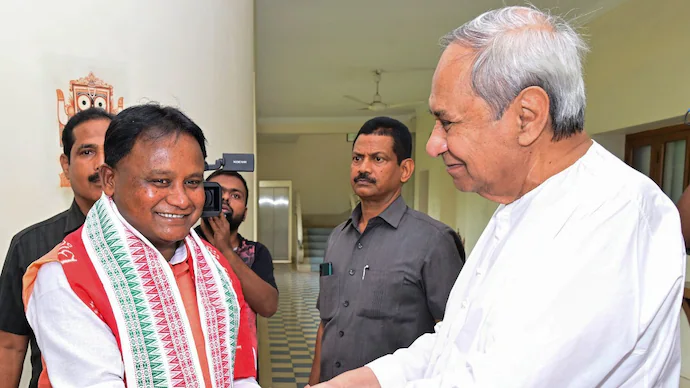In a strategic move to enhance governance and accountability, Naveen Patnaik has introduced a Westminster-style “shadow cabinet” in Odisha. This innovative step aims to scrutinize the functioning of the newly-formed BJP government led by Chief Minister Mohan Manjhi and ensure efficient administration in the state.
What is a Shadow Cabinet?
A shadow cabinet is an alternative government-in-waiting, composed of opposition members who are assigned to monitor specific departments and their ministers in the ruling government. These shadow ministers develop policies and hold the government accountable for its actions, promoting transparency and preparedness for future governance.
Implementation in Odisha
Patnaik has appointed 50 BJD MLAs to various departments, mirroring the positions held by BJP Cabinet members. This move is designed to hold the relatively inexperienced BJP government accountable and ensure that departmental operations are effectively managed. Former finance minister Prasanna Acharya will oversee the finance department, while Pratap Deb will manage administration and public grievances.
A Historical Context
Naveen Patnaik’s extensive experience abroad, particularly his interest in British cultural and political matters, likely influenced his decision to implement a shadow cabinet in Odisha, inspired by the British political system.
Function and Impact
The shadow ministers will monitor decisions and policies of their respective departments, providing a clear strategy for the BJD to address the government in the Assembly. This initiative not only ensures government accountability but also prepares the BJD for a potential return to power, equipping its members with in-depth knowledge of departmental workings.
Reactions and Implications
BJD MLA Pratap Dev stated that this move would help monitor the functioning of the government and offer timely course corrections if needed. The implementation of a shadow cabinet at the state level is a first in India, reflecting Patnaik’s innovative approach to governance.
Shadow Cabinet in India
While the concept is new in Odisha, similar initiatives have been undertaken in other Indian states. The Rajasthan Congress recently announced plans to form a shadow cabinet, and in the past, opposition parties in Maharashtra and Madhya Pradesh have experimented with similar concepts. Civil society groups have also formed shadow cabinets to analyze government policies.
A Collaborative Future
The BJP government, led by CM Mohan Manjhi, welcomes this move as a constructive step towards collaborative governance. The BJP aims to work in harmony with the opposition to ensure the state’s development and address the needs of its people effectively. This spirit of cooperative governance highlights the BJP’s commitment to transparency and accountability, ensuring that the administration works for the benefit of all citizens.
Conclusion
Naveen Patnaik’s formation of a shadow cabinet in Odisha marks a significant development in Indian politics. As the BJD transitions into the role of the opposition, this initiative ensures that the party remains vigilant and prepared, reinforcing its commitment to the state’s welfare and progress. The BJP government, on the other hand, views this as an opportunity to strengthen democratic processes and ensure effective governance through constructive criticism and collaboration.

